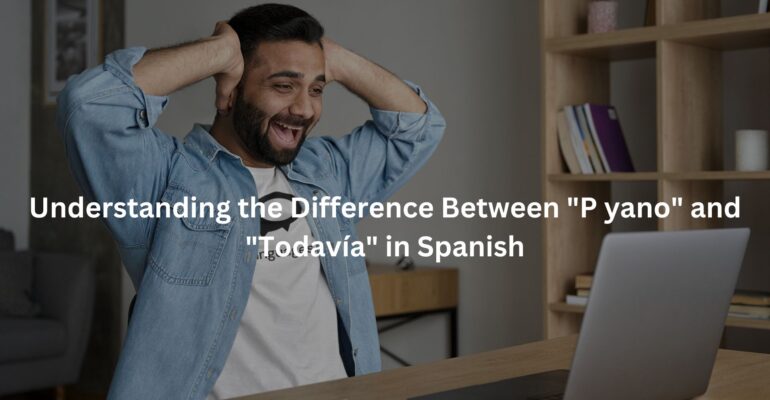Understanding the Difference Between “P yano” and “TodavĂa” in Spanish: Explained with Examples
Understanding the Difference Between “P yano” and “TodavĂa” in Spanish: Explained with Examples
Introduction: Understanding the nuances of Spanish can be challenging, especially when it comes to similar-sounding words like “p yano” and “todavĂa.” While both convey a sense of time or condition, they are used in different contexts. Let’s delve into the details to grasp their distinctions through examples.
P yano:
- “P yano” is used to express an action that has already occurred. For instance: “Ya p yano el libro” means “I already read the book.”
- It’s also used in expressions of completion or culmination. Example: “P yano de estudiar” translates to “I finished studying.”
- When indicating something that happened in the recent past: “P yano salĂ de casa cuando comenzĂł a llover” (I just left home when it started raining).
- Used in the sense of “already” to denote early completion. “P yano hemos terminado la tarea” (We have already finished the homework).
- Sometimes used to convey surprise or impatience. Example: “¡P yano lo entendĂ!” (I still don’t get it!/I already don’t understand it!)
TodavĂa:
- “TodavĂa” indicates something that hasn’t happened yet. For example: “TodavĂa no he llegado a casa” means “I haven’t arrived home yet.”
- It’s used to express continuity or persistence. “TodavĂa está lloviendo” means “It’s still raining.”
- When expressing possibilities or expectations for the future. “TodavĂa puede mejorar” (It can still improve).
- Used with negative statements to convey “still” or “yet.” For instance: “TodavĂa no lo he visto” (I still haven’t seen it).
- Expressing surprise or disbelief that something hasn’t happened yet. Example: “ÂżTodavĂa no has terminado?” (You still haven’t finished?)
Conclusion: “P yano” and “todavĂa” may seem similar, but their usage in Spanish distinctly marks past actions or states (“p yano”) versus ongoing actions or states (“todavĂa”). Mastering their usage enhances fluency and communication skills in the Spanish language.










